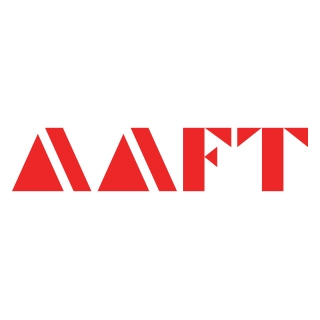Guide to a Career in Animation – Top Courses, Skills, Fees, Job opportunities
Animation evokes a sense of nostalgia in people who’ve grown up watching Disney and Cartoon Network. As the industry experiences exponential growth and expansion, pursuing a course in animation is now more profitable than ever. It comes with opportunities to work in a plethora of different job roles, upgrade your artistic skills, and experiment with all the techniques and mediums.
If this sounds interesting, you’re at the right place. Read on to find out more about Animation and VFX courses and what they have in store for you.
Why Enroll in an Animation Course
The Animation Industry is highly competitive. Navigating it hassle-free requires an in-depth knowledge of the subject matter, technical skills, and digital mastery. Animation Courses are designed to provide you with all the necessary tools and resources. You will work with acclaimed academicians and industry experts, learn the latest animation design and post-production software, and track your progress through the semester-based evaluation systems.
Formal courses are comprehensive and provide a holistic understanding that you can use to build a resume and an attractive portfolio. You can develop a unique style, showcase your work, and connect with fellow animators. A collaborative and artistic space is great for enhanced creative workflow as well.
What Skills Do I Need to Study Animation?
Do you want free career counseling?
Ignite Your Ambitions- Seize the Opportunity for a Free Career Counseling Session.
- 30+ Years in Education
- 250+ Faculties
- 30K+ Alumni Network
- 10th in World Ranking
- 1000+ Celebrity
- 120+ Countries Students Enrolled
Wondering if you have the right skills to pursue a course in visual effects or animation?
- Creative Drive – Start by thinking if you have a high creative drive. If you are someone who loves to make things, doodle, paint, or create characters and build plots, animation might be a good career choice.
- Artistic Qualities – Although it isn’t a mandatory requirement, having good artistic skills can help you get ahead of the curve in an animation institute. Having an eye for detail, being quick with new techniques, and versatility in terms of mediums are key to developing your artistic qualities.
- Technical Skills – Animation Courses include a bunch of technical skills that you will master. From storyboarding, and compositing, to designing characters, engaging storytelling through captivating plots, and so on. If you like brainstorming, express your ideas, and effectively convey them to others, you are good to go.
- Tech-Savvy – The Animation and VFX industry is heavily dependent on emerging technological innovations. From 3D animation, and storyboarding, to compositing and post-production, digital tools are the way to go. If you like to explore the latest technology and have the ability to quickly learn new software, this field can open numerous doors for you.
Read Also: VFX Artist vs 3D Animator – What is the difference?
What are the Available Courses – Curriculum Overview
Bachelor’s Degree
B.Des and B.Sc. in Animation and VFX are 4-year and 3-year programs respectively. They will introduce you to a combination of theory and practical-oriented subjects. This includes digital imaging, vector and raster graphic design, 2D and 3D animations, 3D modeling, texturing, simulation, 3D visualization, and CGI and VFX. You will explore scriptwriting, storyboarding, compositing, and post-production processes through both traditional and digital methods. Complete with training in the latest software, internship, and portfolio building, this course is a great start to a rewarding career in animation.
Book Now →
Master’s Degree
M.Des/M.Sc. in Animation is an advanced course focusing on tools and techniques used in graphic design, introduction to 2D and 3D animation, and modeling and texturing. It will take you through storyboarding, scriptwriting, compositing, 3D character design, surface and look development, and more. Over the 2 years, you will understand and dissect animated films, understand CGI and VFX, and learn high-end dynamic effects through the latest software and industry tools.
Diploma Course
Usually spanning about 6 months – 2 years, these courses would introduce you to the fundamentals of animation design. You will try your hands on 2D and 3D animation, 3D character design, modeling, scriptwriting, storyboarding, compositing, and other technical aspects. You will get to work with the latest software, understand post-production processes, CGI, and VFX, and explore various opportunities.
Read Also: Top 10 Best Animation Software for Beginners in 2023-24
Do you want free career counseling?
Ignite Your Ambitions- Seize the Opportunity for a Free Career Counseling Session.Certificate Courses
Certification courses are short-term courses of 6 weeks – 3 months. These are perfect for specializing in a particular skill or mastering a software. Depending on what you are looking for, you can specialize in, say, 3D animation, CGI and VFX, motion graphics, or character design.
Difference Between Degree and Diploma Courses
Degree courses usually have a longer duration (3-4 years) with a more advanced curriculum. They often have a higher fee range but provide more infrastructure opportunities and industry exposure. These are also more likely to help you land high-paying jobs.
Diplomas on the other hand typically span 6 months to 2 years. These provide an overview of the discipline and are more practical assignment-oriented. Although varied, the fee structure is lower than for degree courses.
Who Should Opt for Certification Courses in Animation?
Since these courses don’t usually have special eligibility criteria, you can apply right after finishing school. However, certification courses are more useful for people who want to get familiar with a certain niche. You can, for example, specialize in Stop-Motion Animation, Motion Graphics, or 2D and 3D animation through short-term courses.
If you have a knack for visual effects and animation but aren’t sure of a full-time degree course, a 6-12 week short-term course can be a good idea. They would help you assess your skills, add value to your resume, and enable you to decide whether an animation career would be right for you.
Read Also: How to Use Animation and VFX to Tell out of the box Stories
For professionals and students pursuing a related degree, certificate courses in particular software, or an emerging skill/technique can be lucrative. They will help you upskill and increase your employability. Since these courses can be pursued alongside other degree/diploma courses, they provide an opportunity to expand your horizons and look for better career options.
Eligibility Criteria for Animation Courses
- If you are looking forward to an undergraduate degree/diploma course in animation after 12th, you will need a minimum 50% aggregate (or equivalent CGPA) in your board exams with any subject combinations.
- For postgraduate degrees and diplomas, you need to complete your graduation with any subject, which is a minimum of 10+2+3 years. The university might ask for at least a 50% aggregate score (or equivalent CGPA) as one of the criteria.
Entrance Tests
- Animation Institutes and Design Schools often conduct their independent entrance/aptitude tests for B.Des and B.Sc. Courses. Some institutes also follow it up with a desk or online personal interview. Colleges like NID conduct Design Aptitude Tests (DAT) for students who have completed their 10+2.
- For postgraduate degrees (M.Des/M.Sc.), CEED (for M.Des at IIT Bombay), NID-DAT, CUET-PG, and AIEED are some of the most well-known entrance tests. Some Diploma Courses might require you to clear eligibility tests or personal interviews as well.
Read Also: Creative Education in the Digital Age: Challenges and Opportunities
Fee Structure
The fee structure for Animation and VFX courses varies based on different parameters. For instance, private colleges might have higher fees than government ones. Fees also depend on infrastructure, internship opportunities, expert faculty members, and location. Keeping in mind all the influences, the following table can give you a brief idea of how much different courses might cost –
| Type of Course | Total Course Fee Range (in INR – ₹) |
| B.Des in Animation Design | 12,00,000 – 16,00,000 |
| B.Sc. in Animation and Visual Effects | 3,00,000 – 15,00,000 |
| M.Des in Animation Design | 10,00,000 – 11,50,000 |
| M.Sc. in Animation and Visual Effects | 2,00,000 – 8,00,000 |
| UG Diploma | 50,000 – 3,00,000 |
| PG Diploma | 1,00,000 – 4,00,000 |
| Certification Courses (Offline) | 20,000 – 1,50,000 |
| Online Certification Courses | 10,000 – 50,000 |
Job Opportunities and Expected Pay
Once you have completed an animation course, you can apply for jobs in multiple industries. You could work in film and entertainment, advertising, publishing companies, and architecture firms. The salaries in these professions vary depending on the nature of the work, specializations required, complexity, and so on. Take a look at the table below to get a basic understanding of some of the job roles and the salaries they offer.
Read Also: How Artificial Intelligence is Reshaping Animation Production?
| Job Titles | Approximate Salary Range (entry-level) in INR – ₹ (Per Annum) |
| Motion Graphic Designer | 2,70,000 – 5,00,000 |
| VFX artist | 2,15,000 – 4,40,000 |
| Assistant Animation Director | 4,00,000 – 5,00,000 |
| Storyboard Artist | 3,00,000 – 3,90,000 |
| Broadcast Designer | 3,50,000 – 5,00,000 |
| Character Designer | 2,00,000 – 3,50,000 |
| Comic Book/Graphic Novel Illustrator | 2,80,000 – 3,40,000 |
Conclusion
A career in animation will allow you to grow your creative abilities and fuel the artist in you. Enrolling in a formal course could be the first major step towards fulfilling your dreams. AAFT offers Undergraduate and Postgraduate programs that ensure your journey through animation and VFX courses is memorable and full of learning experiences. You will be turning in projects, attending workshops, and exploring the niche of your choice under the guidance of expert faculty members.

AAFT has been providing the world with limitless creativity and expression since 1993! Through a dynamic and industry-driven curriculum, AAFT provides engaging and captivating articles to persuasive blogs and empowers its readers to explore diverse avenues of creative media education-related content.











